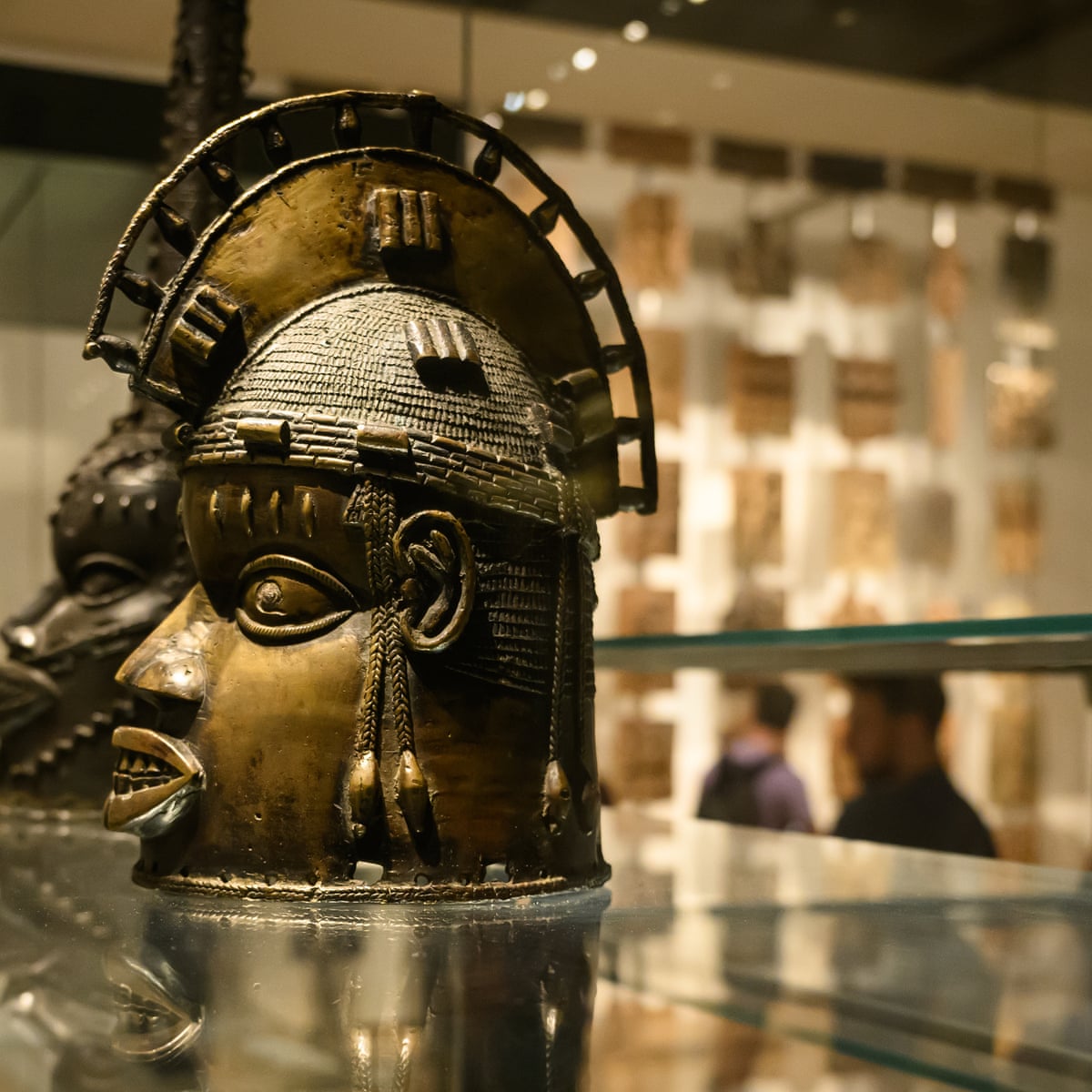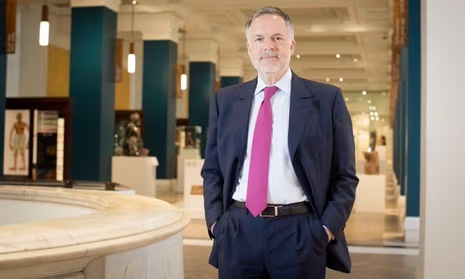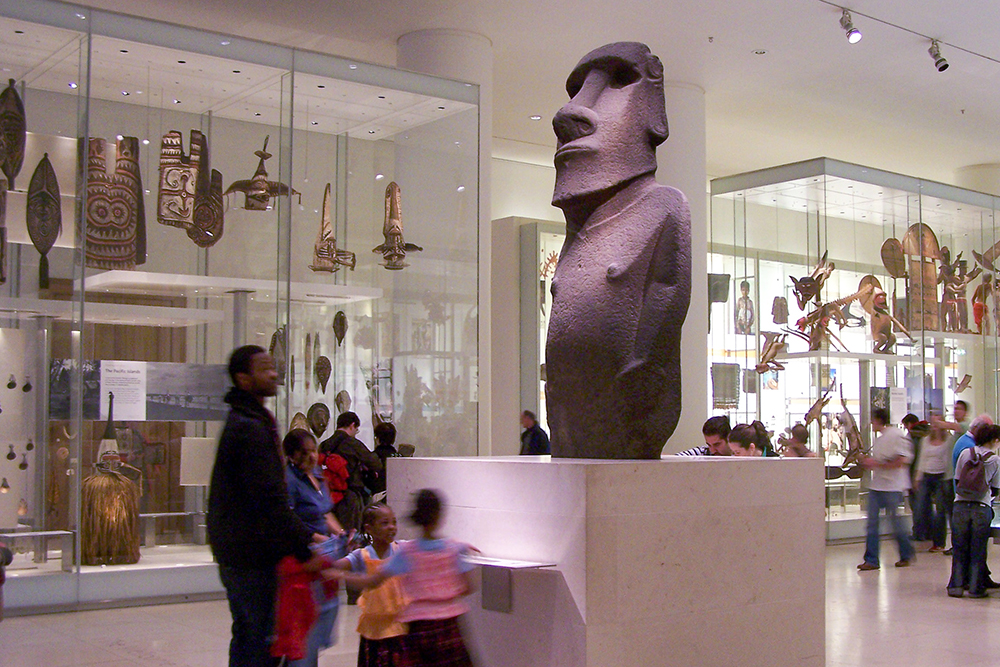Introduction
The British Museum’s loss of 1,500 items, allegations of theft involving insiders, and the questions raised about its extensive collection’s origins have ignited a renewed discussion on the moral and ethical aspects of retaining artefacts acquired during the era of imperialism. In light of these developments, Professor Kavita Singh’s perspective becomes a critical lens through which to examine the responsibilities and obligations of museums in the modern era, particularly regarding the complex legacies of colonialism and the preservation of global cultural heritage. First, let’s look into the series of events that unfolded in the British Museum.

The Loss of 1,500 Items
In a shocking revelation reported by The Guardian on August 26, 2023, it was disclosed that the British Museum had lost 1,500 items from its collection. Experts believe that recovering these items could take decades, and this loss has raised significant concerns about the museum’s security protocols. The incident has not only resulted in the physical loss of irreplaceable artefacts but has also dealt a severe blow to the institution’s reputation.

The Extensive Collection
A recent analysis by Al Jazeera in late August 2023 shed light on the vast scale of the British Museum’s collection. With an online database cataloguing 2.2 million the institution’s holdings are nothing short of impressive. However, this revelation has sparked questions about the origins and acquisition of these items, drawing attention to the need for transparency and ethical considerations in the museum’s practices.
The Director’s Resignation
Adding to the turmoil, the British Museum’s director resigned amid ongoing investigations into the theft or disappearance of hundreds of ancient items. As reported by the Los Angeles Times on August 25, 2023, this resignation was a significant development that further highlighted the challenges faced by the institution regarding the security of its invaluable treasures. The departure of a key figure in the museum’s leadership has raised questions about accountability and oversight.

Previous Incidents and Controversies
While the recent loss of 1,500 items is a significant blow to the British Museum’s reputation, it is not the first time the institution has faced challenges. Previous incidents of theft and controversies, as reported by BBC News, have exposed vulnerabilities in the museum’s security infrastructure. These incidents serve as a reminder that ongoing vigilance and improvement in security protocols are essential to safeguard the world’s cultural heritage.
Recovery Efforts and Suspicions of Insider Involvement
In a somewhat positive turn of events, CBS News reported in August 2023 that some of the 2,000 items believed to have been stolen from the British Museum had been recovered. These developments followed suspicions of insider involvement. The head of trustees at the British Museum provided this update, offering a glimmer of hope that efforts to retrieve lost artifacts are underway.
Kavita Singh, a distinguished professor of art history at JNU, provided a thought-provoking perspective when linked to the recent developments at the British Museum in one of her articles for The Scroll in the past. The loss of 1,500 items, the resignation of the museum’s director, and suspicions of insider involvement have indeed cast a shadow over the institution’s reputation. Professor Singh’s insights can initiate a vital dialogue regarding whether the British Museum deserves to retain the vast collection of artefacts it acquired during the era of imperialism.
In light of these recent setbacks, one cannot help but question the ethical dimensions of holding onto such an extensive collection amassed during a period marked by colonialism and the exploitation of indigenous cultures. The revelations of the vast scale of the British Museum’s collection, cataloguing items from over 212 different countries, highlight the need for transparency in addressing the origins and acquisition of these items. As we confront the loss of 1,500 artefacts and allegations of theft involving insiders, it becomes imperative to consider the historical context in which many of these treasures were obtained.
Professor Singh’s perspective can spark a dialogue on whether it is morally justifiable for a renowned institution like the British Museum to continue housing artefacts obtained through imperialistic actions. Should these items be returned to their countries of origin as a gesture of acknowledgement and reparation for past wrongs? Or should the museum focus on improving its security protocols and preserving these artefacts for the sake of global cultural heritage? These questions prompt a deeper exploration of the responsibilities and ethical obligations museums bear in the modern era, especially in the wake of such troubling incidents.
Kavita Singh has long been an advocate for ethical considerations in the context of museums and their collections. Her writings have often questioned the provenance of artefacts in institutions like the British Museum, and the recent developments there only intensify the debate. The loss of 1,500 items, suspicions of insider involvement, and previous incidents of theft have undoubtedly cast a shadow over the institution’s credibility.
She may argue that it’s time to reevaluate the ethical implications of holding onto these artefacts and whether the museum’s infrastructure in their homeland, as well as globally, is prepared to handle the potential repatriation or shared stewardship of these cultural treasures. This dialogue raises essential questions about the responsibility of museums in the 21st century and their role in addressing the complex legacies of colonialism and imperialism.
Singh begins by recounting the historical context in which artefacts were often removed from their original sites. She highlights the efforts of individuals like Colin McKenzie in the late 18th century, who “carted away” items of archaeological interest from places like Amaravati, where there was no infrastructure or means of preservation. Singh emphasises that at the time, there were no museums in India to house these artefacts, leading to their removal for safekeeping.
The professor goes on to explain that, for much of the 19th century, archaeology primarily involved the rescue of objects from the field, which were then deposited in museums, learned societies, or private homes. Singh introduces Henry Hardy Cole, who advocated for in situ conservation but faced challenges due to the associated costs and infrastructure requirements. It was only in the early 20th century, under Viceroy Curzon and the leadership of John Marshall, that archaeological work in India became professionalized and began to combine scientific excavations with in situ conservation efforts.
Singh also touches upon the contrasting fates of three prominent stupas—Amaravati, Bharhut, and Sanchi—in colonial times. While artefacts from Amaravati and Bharhut were largely taken to museums, Sanchi’s stupa was conserved in situ. The reason for Sanchi’s preservation on-site can be attributed, in part, to inter-imperial rivalry, as the Begum of Bhopal offered the sculptures as a gift to the French when the British declined, leading the British authorities to step in and restore the stupa.
However, Singh points out that preservation efforts haven’t always been ideal, even in modern times. She shares her firsthand experience of visiting the Madras Museum more than a decade ago, where the Amaravati sculptures were poorly maintained. The sculptures suffered from humidity, water seepage, and neglect, and the gallery housing them was in a state of disrepair.
Singh expresses her disappointment in the Madras Museum’s treatment of these artefacts and its reluctance to share them with institutions in need. She notes that even when the National Museum in Delhi sought to borrow Amaravati sculptures to illustrate the earliest phases of Buddhist sculpture in India, Madras refused, while the British Museum lent its support.
The professor concludes by urging us to consider the complexities of history and heritage preservation. She highlights the failures of both the colonial and post-colonial periods and calls for a closer examination of our own contributions to these imbalances. Singh’s perspective serves as a reminder that the protection and sharing of cultural heritage require ongoing commitment, diplomacy, and vigilance, not only in the face of external challenges but also within our own institutions.
Feature Image: Statue from Rapa Nui (Easter Island) in the British Museum. Courtesy: Professor Joe Cain

Contributor





